‘We’re just at the beginning’ of understanding mass shootings, Northeastern panel warns
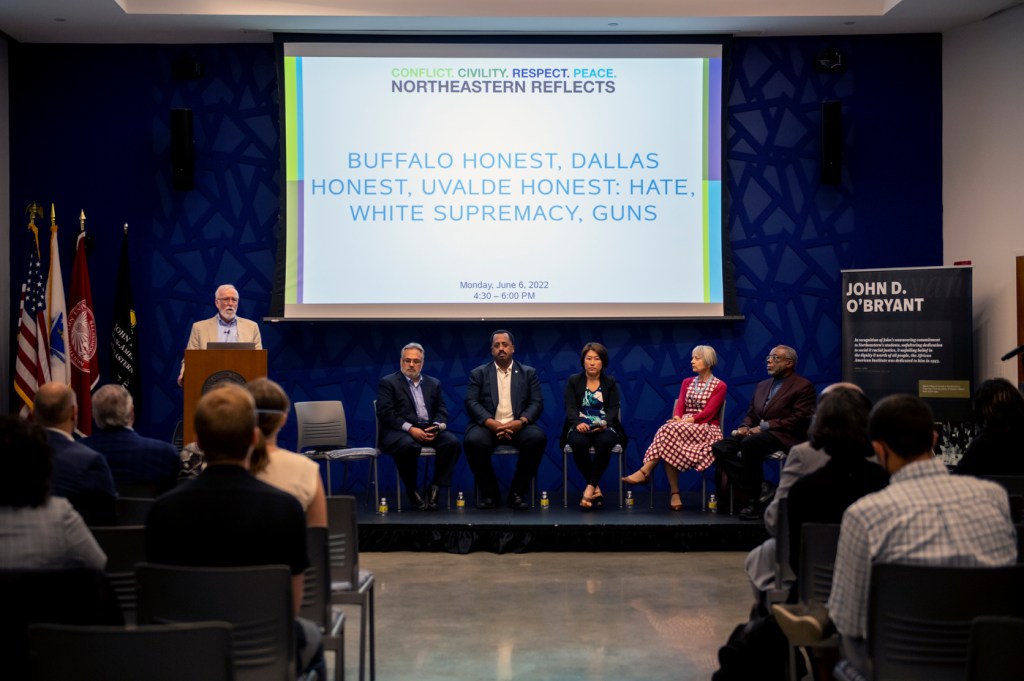
As of late afternoon Monday, as panelists at a Northeastern event discussed the ever-growing epidemic of gun violence, there had been 247 mass shootings in the U.S. already this year.
It is part of a gruesome trend: From 417 mass shootings in 2019, to 610 the following year, to 692 a year ago. Though they generate extensive reporting by the news media, each event contributes to a dynamic of uncertainty and hopelessness, noted Ted Landsmark, a panelist of “Buffalo Honest, Dallas Honest, Uvalde Honest: Hate, White Supremacy, Guns.”
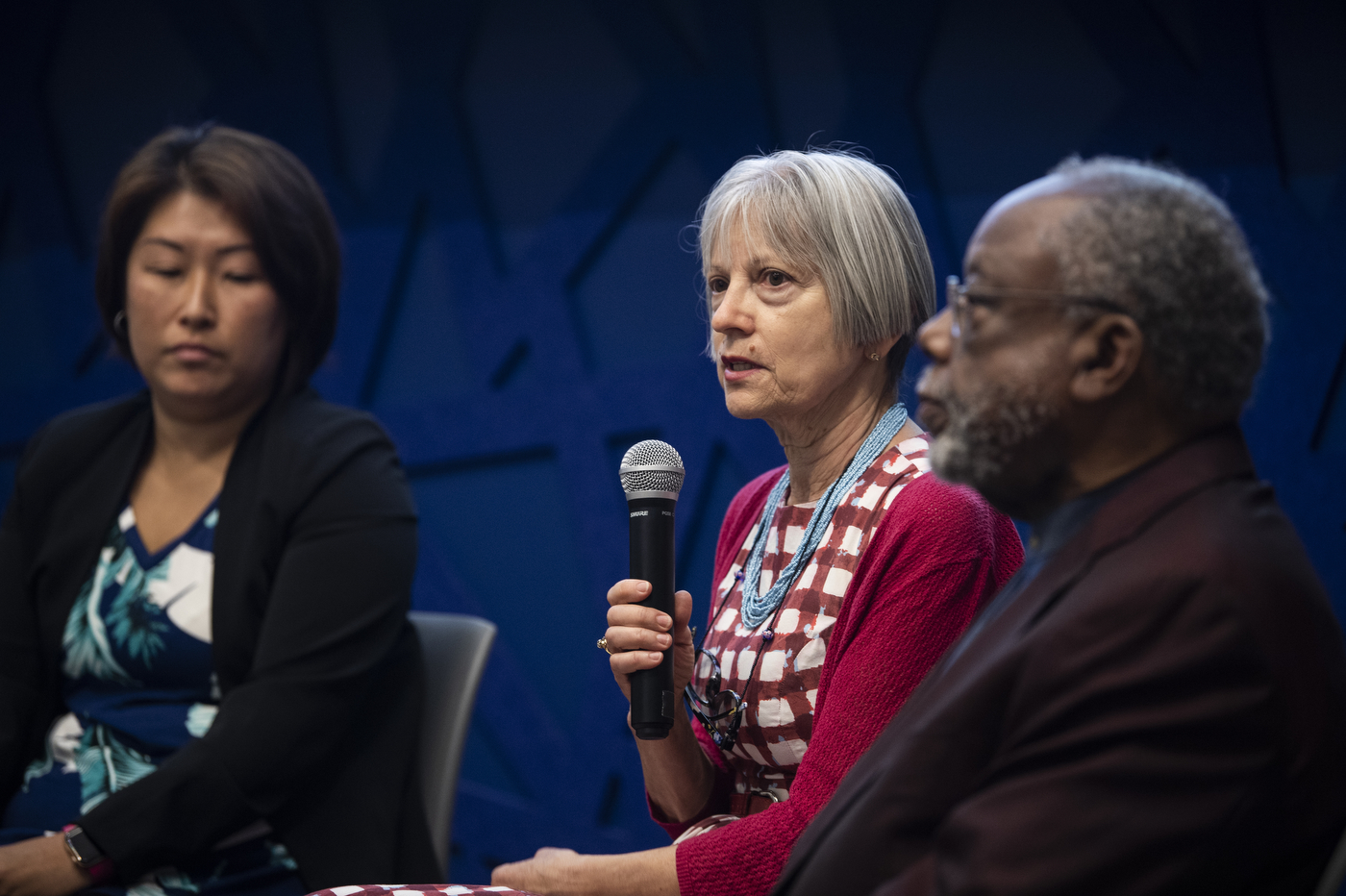
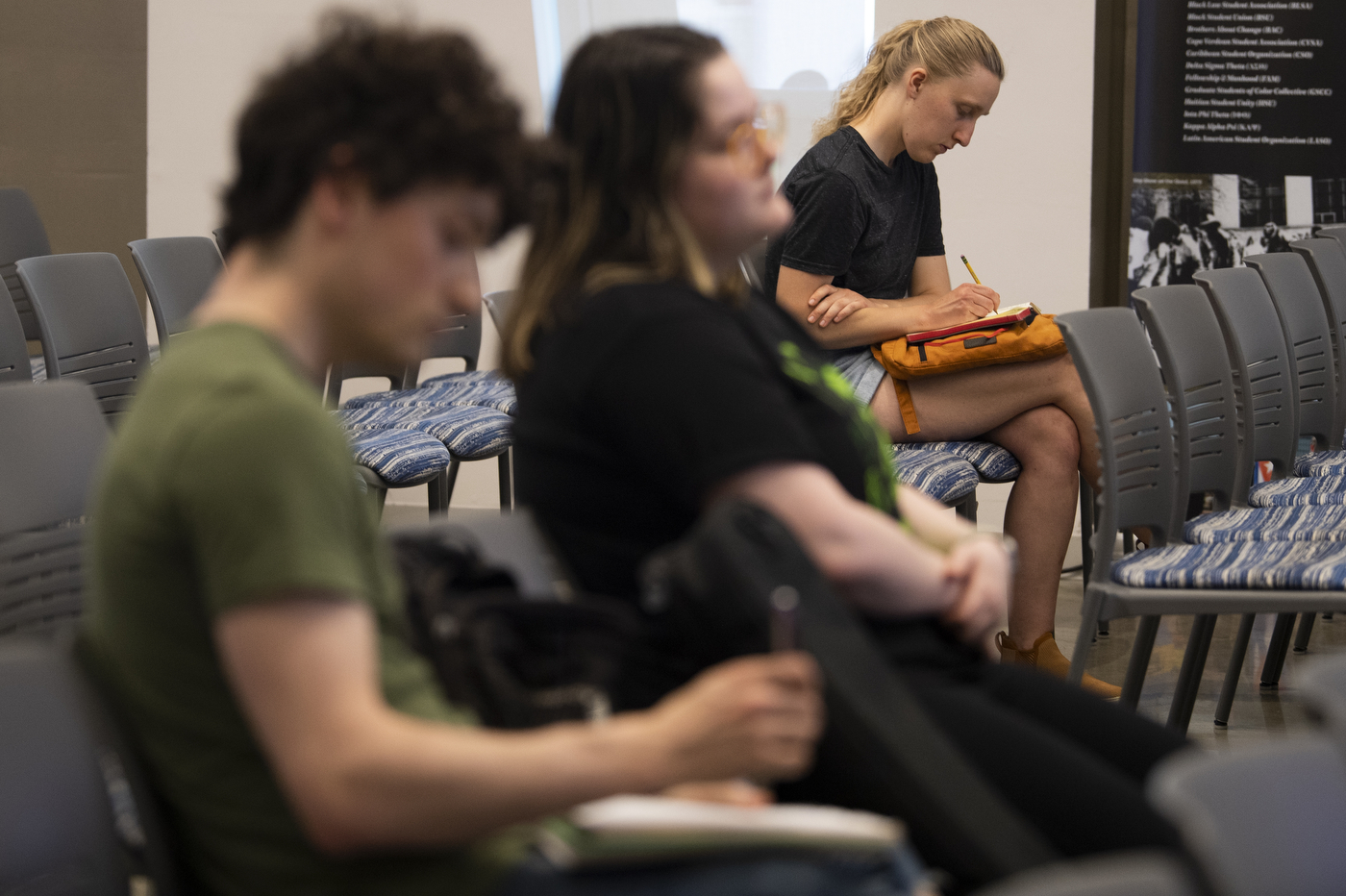
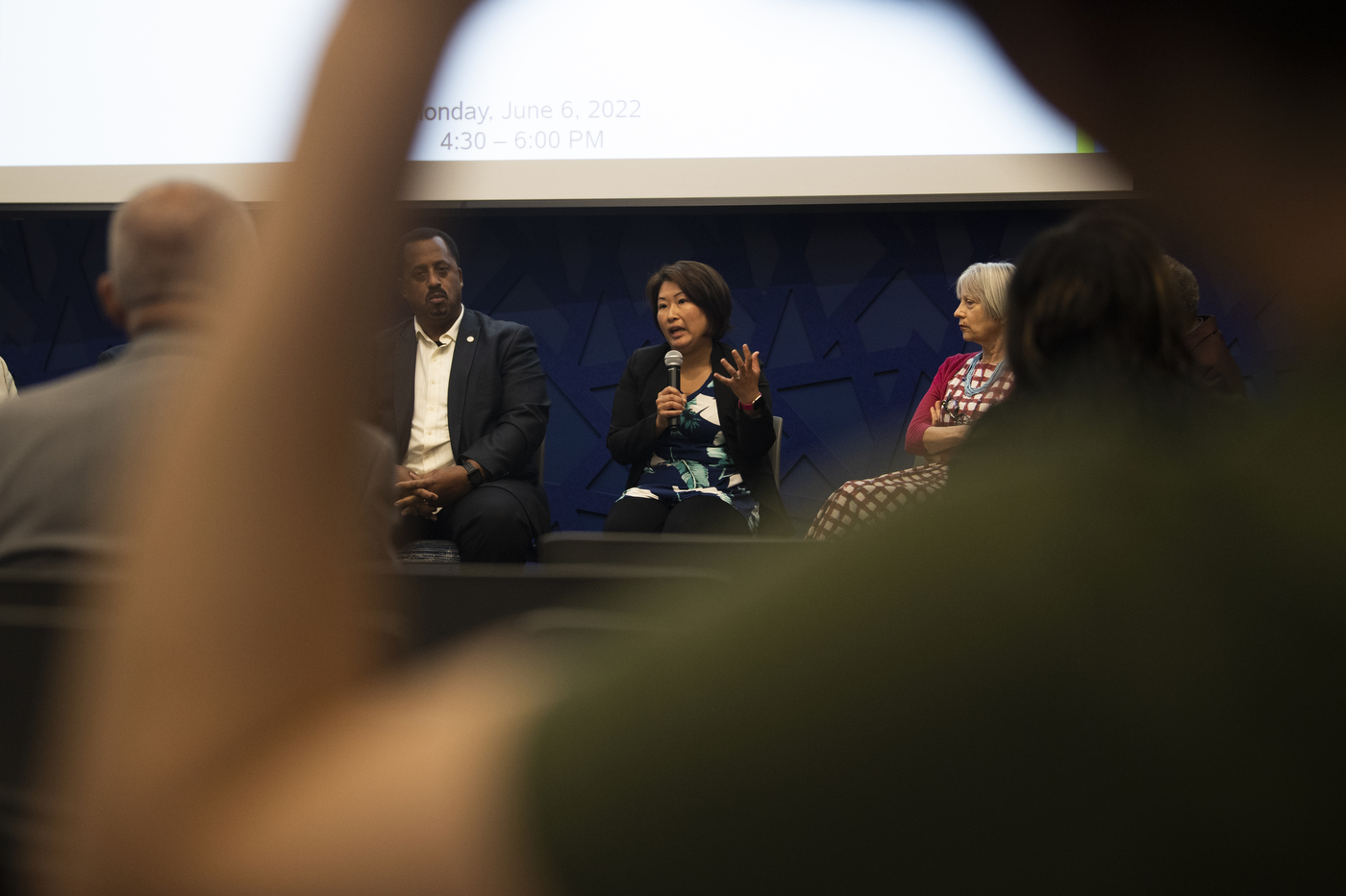
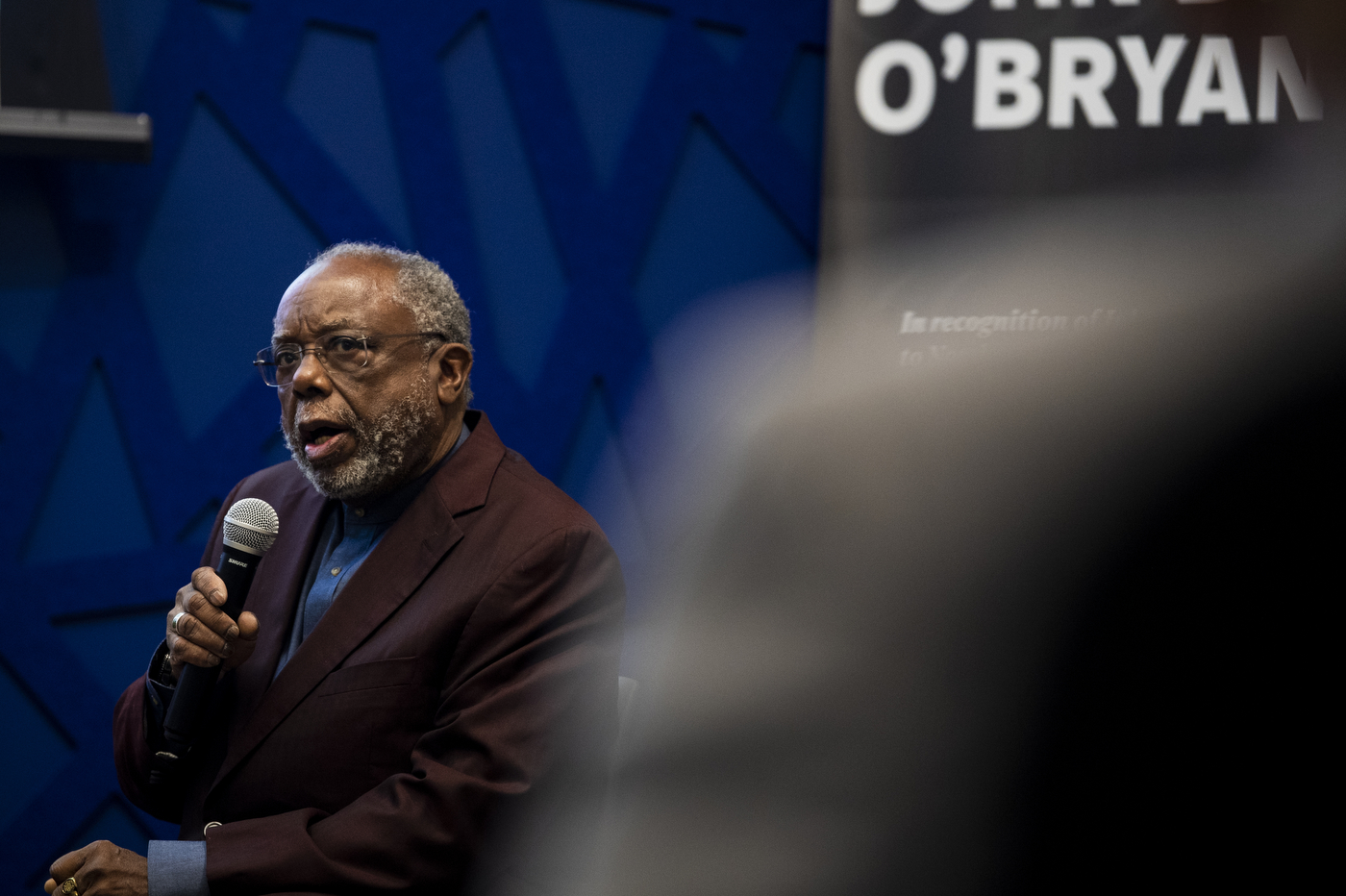
“I feel as though we’re just at the beginning of trying to figure out why it was that someone in rural South Carolina would drive several hours and then sit in a church basement with a group of people he didn’t know—who were willing to have him join in a prayer meeting—and then shoot and kill them,” said Landsmark, distinguished professor of public policy and urban affairs, and director of the Kitty and Michael Dukakis Center for Urban and Regional Policy. “That’s a kind of sickness that I don’t know that we understand yet.”
He was referring to the 2015 massacre of nine people by 21-year-old Dylann Roof, an admitted white supremacist.
The in-person and streamed event, held at the Cabral Center at the John D. O’Bryant African American Institute, was part of Northeastern’s Civility Series, focused on civic sustainability. It was driven by a need to understand and respond to the mass shootings that included the May 24 killings of 19 students and two teachers at Robb Elementary School in Uvalde, Texas.
Landsmark urged academics to collaborate on collecting and analyzing information drawn from these events in order to make sense of their currently unfathomable pattern.
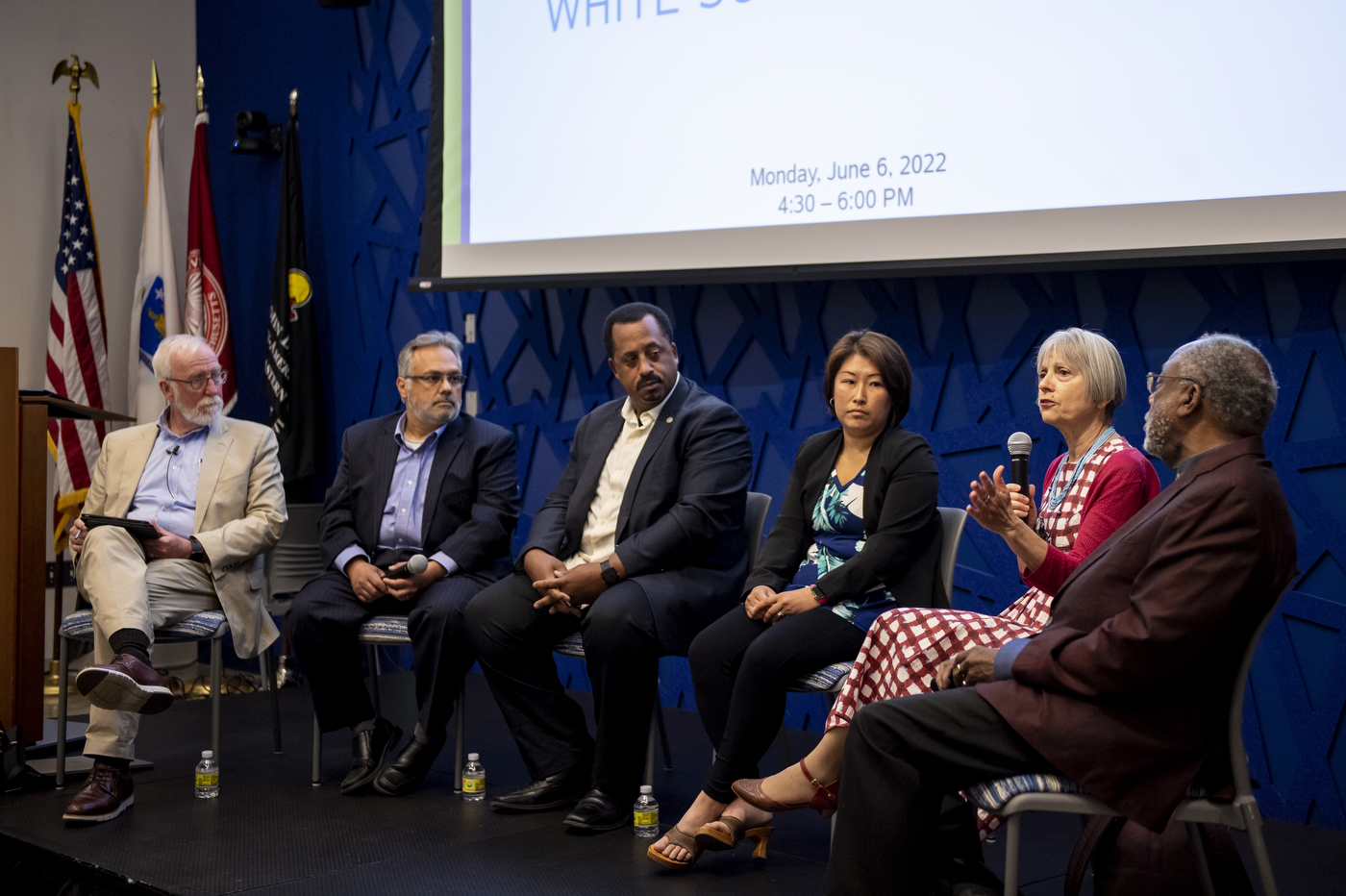
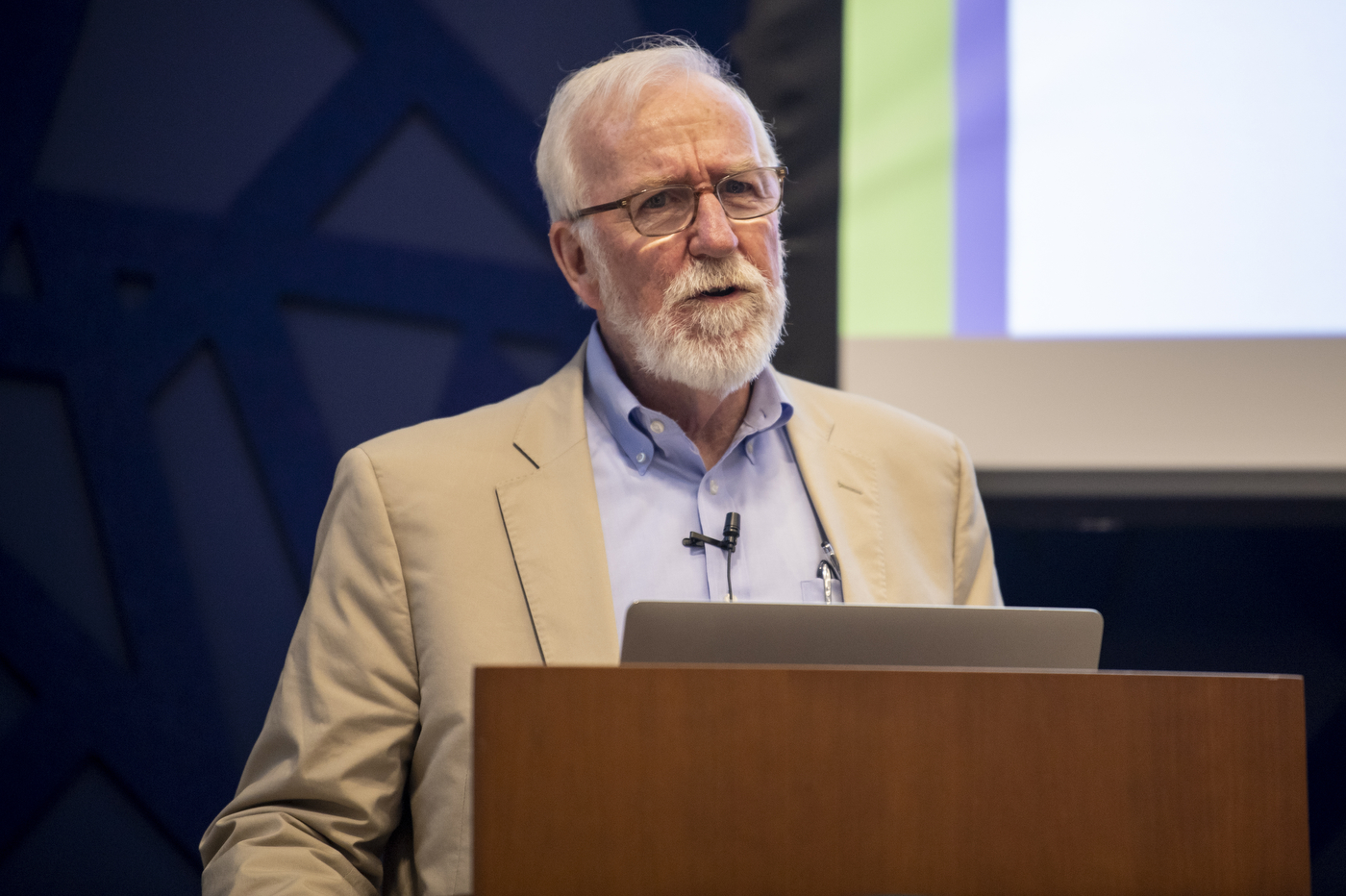
“The triggers of those assault weapons are being pulled by a range of people who we don’t understand fully,” Landsmark said. “Two years ago, I was able to say, ‘This is an issue of young white men who are disenfranchised and feel distant.’”
But Landsmark noted that the circumstances have grown more complex and volatile involving killers across the demographic spectrum.
On May 14 in Buffalo, 10 people were killed and three were wounded by a white teenager who appeared to be driven by replacement theory, which suggests that nonwhite people are brought to the U.S. to replace white voters on behalf of a political agenda.
But three days earlier, in Dallas, three women of Asian descent were shot in a hair salon in the Koreatown neighborhood in what has been referred to as a hate crime by Dallas police. The alleged assailant was a Black man.
And on May 15 in Laguna Woods, California, the alleged assailant, a 68-year-old immigrant from Taiwan, killed one person and injured five more at a Sunday church service attended by people of Asian descent. The shooter was alleged to be driven by political hatred of Taiwan and its people. He had chained and locked the doors and had four Molotov cocktails stored inside the hall.
“One of the big changes, that we never saw in the past, is guns being used in hate crimes,” said the panel moderator, Jack McDevitt, professor of the practice in criminology and criminal justice, and director of the Institute on Race and Justice.
McDevitt, who has been studying hate crimes for 35 years, remembers a time when fewer than 1% of them were committed with guns. The ongoing use of firearms “changes the dynamics of hate crimes in America,” McDevitt said. “And believe me, this is an American issue.”
Another complicating dynamic of mass shootings is that many of them happen within families, noted Gordana Rabrenovic, associate professor of sociology and director of the Brudnick Center on Violence and Conflict.
“This is part of a larger discussion of domestic violence, of issues of resentment and powerlessness, and when people feel that then they use the violence as a way of regaining power,” said Rabrenovic, noting that the father is usually the killer in these instances. “Violence as a tool to get recognition and power is something that I think comes from our culture. That has to be addressed.”
Richard L. O’Bryant recalled feelings of helplessness that he experienced while fleeing a train station during a public shooting that left one man injured following the Boston Marathon in April. He has applied that experience while considering the victims of recent attacks.
“What does it feel like to be trapped in a building knowing that somebody is hunting you? What does it feel like to be in a situation where you have no power, no control, over what is happening around you?” said O’Bryant, director of the African American Institute and research associate at the Dukakis Center. “It’s really a challenge for us collectively. We have to change this and not allow the resistance, whatever it may be, to win. Because it can’t go on like this … like life is normal. It’s not normal.”
The panelists agreed that the need for communication is paramount. People must be able to discuss their differences without generating hate for each other, Landsmark said. Amid the longstanding desire for federal legislation, O’Bryant added that it was important to develop relationships with young people who are growing up in a high-anxiety era.
Chong Kim-Wong, vice chancellor and dean of students, noted that Northeastern offers counseling and other resources of support for students.
“How can we engage our students early on?” she said. “I’m thinking about how we can get those resources to our students so that they can correct it with some help and support before things go down a dark path. It’s really important for us to continue to engage in these conversations, and the key thing is to be very proactive and not wait for something to happen.”
It is important to remember that people with mental health issues are far more likely to be victims of violence than perpetrators of it, said Carlos Cuevas, a clinical psychologist, who added that the families, colleagues, neighbors and others who are affected by gun violence carry the wounds with them long after the news media has moved on to the next shooting.
“Trauma doesn’t care how long ago it was,” said Cuevas, professor of criminology and criminal justice, and co-director of the Violence and Justice Research Lab. “Trauma doesn’t care who else was there. There are a lot of people who are still with us after a [shooting] event who are going to need support and help and services and community.
“There’s a ripple effect of these events that we forget about when the next horrible one comes around and gets our attention.”
For media inquiries, please contact media@northeastern.edu.






